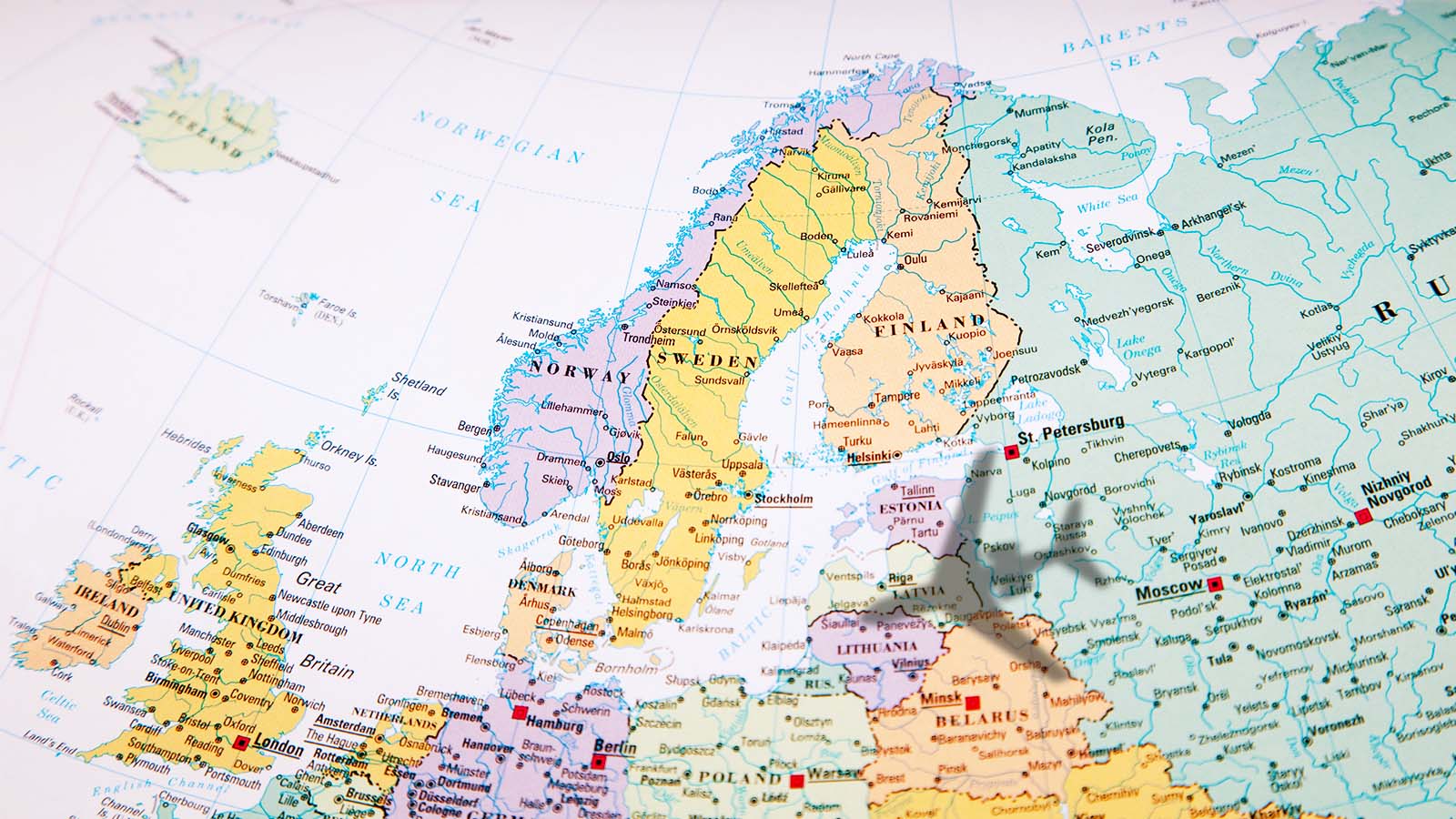10 Potentially Challenging International Permits for Business Aviation Operators

This aviation blog post of part of a series on overflight permits and landing permits.
Overflight and landing permits vary in complexity and lead time. It depends on the region of the world you’re flying to and the type of operation you’re doing. Charter (non-scheduled commercial) permits usually require additional documentation and lead time, involve assorted operating restrictions and may be more difficult to change. The permit process for private non-revenue operators is generally more straightforward and less rigorous. Nevertheless, adequate planning is still essential in order to preserve operational flexibility. It’s important to plan your schedule as far in advance as possible in order to work on permits that may require lengthy timeframes to process. If you don’t use an experienced 3rd-party provider, there is a potential for problems, as you may not be able to contact appropriate authorities on short notice and may not be aware of all needed requirements.
1. Venezuela overflight and landing permits require advance lead time and planning
Landing permits for Venezuela are required for both private non-revenue and charter (non-scheduled commercial) flights, with tech stops as the only exception. Due to Venezuelan regulations and processes, it takes a minimum of 25 days to secure a landing permit. The first step in this process is to have a permit vendor obtain authorization to act on your behalf in order to start the permit application process. Once that is accepted, the Venezuelan Civil Aviation Authority (CAA) will check to ensure the aircraft doesn’t have outstanding navigation fees. If there are outstanding fees, they must be levied. This process can be complex and time-consuming. Be prepared to provide a list of documents that must be signed, notarized and couriered to the Venezuelan CAA. After all documentation has been sent and processed – and no errors have been found – the Venezuelan authorities will issue the permit.
Added 3 October 2013: Please note that the regulations on Venezuelan permits have changed. For updated information on the new requirements, please visit our article titled: Demystifying Venezuelan Landing Permits and Overflights.
2. Italy charter permits require unique documentation
Italy requires submission of a questionnaire, along with many documents, before issuing a charter landing permit. A new policy implemented in 2011 mandates a landing permit wait period of 45 days for any operator that has not operated a charter to Italy in the previous two years. This wait period also applies to all first-time charter requests. Once a charter landing permit is approved, you’ll be limited to 36 hours in the country. We have found that, in some cases, permission can be secured to stay a few days longer. However, such exemptions are always at the Italian CAA’s discretion.
Added 3 October 2013: Please note that the regulations on Italian charter permits have changed. For updated information on the new requirements, please visit our article titled: Changes In Italian Charter Flight Permit Regulation – Explained.
3. German charter permits are very specific on requirements
Prior to operating a charter flight to Germany, you’ll need to complete a security clearance questionnaire that is about 50 pages long and very detailed. You must also provide documents, such as specific insurance, using a particular format, along with a copy of your charter agreement, which must indicate the charter price and passenger signatures. While a German charter permit requires five business days to process, it usually goes smoothly if the operator provides all the required information in advance.
4. France requires additional lead time for charter permits
The French CAA has become very stringent on charter permit requirements. As with Italy, a questionnaire must be completed in advance. Documentation requirements include lists of aircraft equipment, inspections and insurance limitations, as well as specific details on flight data recorders. If all documentation is in order, it takes at least five working days for an application for a French charter landing permit to be processed. However, it’s at the French CAA’s discretion to process permits with less lead time.
5. U.K. charter landing permits are subject to the review of the U.K. charter association
What makes the U.K. charter landing permit process different from others is a procedure whereby local charter operators can block your charter permit request, if the 4th, 5th or 7th Freedom Act is involved and if one of the local operators can offer a similar aircraft and route. Your landing permit request must include, among other items, a full itinerary, passenger list and breakdown of legs to be flown. The U.K. Department for Transport provides information about your aircraft type, proposed legs of flight and passenger count to a group of U.K.-based charter operators. The U.K. operators have 24 hours to review the information and respond if they have any objections to the proposed charter flight. If no U.K operator objects, you can proceed with your landing permit application. If there’s an objection – and objections may apply to a single leg of the charter – your permit request will be delayed or denied. This can occur even if you’re just stopping once in the U.K. with no domestic legs planned. In our experience, these issues may be resolved between the operator requesting the permit and the operator who has filed the objection.
6. China permits are route-specific
The Civil Aviation Administration of China (CAAC) requires 10 business days for private non-revenue and charter (non-scheduled commercial) landing permits and four days for overflight permits. However, it’s at the discretion of the CAAC to process requests on shorter notice. Permits are route-specific and will often dictate your route, even though it may not be your preferred one. Chinese authorities are very specific about permit dates and times, as well as requests to change landing or overflight permits. Try to avoid last-minute schedule changes, as CAAC may deny them. A landing permit request for either a private non-revenue or charter (non-scheduled commercial) flight requires a sponsor letter from a China-based business accepting responsibility for your flight. The CAAC may contact your sponsor to confirm information regarding the flight. Be aware that private tourism flights are not permitted within China, and you may not use a hotel or tourism company as your sponsor.
7. Russia can be strict on permit changes
Permit requests for both private non-revenue and charter (non-scheduled commercial) flights require five business days lead time with standard aircraft documentation. If all required documentation is not provided early enough, authorities will deny the permit. In terms of permit validity – for both overflight and landing – it’s seldom problematic to leave or arrive later than planned as long as it’s within the allowable deviation. However, if you choose to leave or arrive earlier than scheduled – even by just 10 to 15 minutes – you’ll require a permit revision.
Added 3 October 2013: Please note that the regulations on Russian charter permits have changed. For updated information on the new requirements, please visit our article titled: Coming Soon: Russian Landing Permit Changes – Effective May 30, 2013.
8. India can be stringent on lead times
The CAA in India is very stringent on permit request lead times – for both private non-revenue and charter (non-scheduled commercial) flights. The lead time is seven business days for landing permits and three business days for overflight permits. Short-notice permit requests are seldom possible, and, for landing permits, a local sponsor is required. Be aware that after a permit has been issued, Indian authorities require a revision to operations requesting earlier departure or arrival, so it’s best to avoid them, if possible. Aircraft attempting to operate over India inside permit request lead time have been denied overflight permits and forced to fly around India’s landmass. It takes at least 30 days to process a request for a private non-revenue or charter (non-scheduled commercial) landing permit at a military airfield such as Agra, India (VIAG), and no deviations are permitted. Additional information, including the father’s name of each person on board, is required for military field landing permits.
Added 3 October 2013: Please note that the regulations on Indian permits have changed. For updated information on the new requirements, please visit our articles titled: It’s Official: Lead Time Reduced for India Flight Permits and Obtaining Crew Visas and Temporary Landing Permits for India – Process Has Been Streamlined.
9. Australia has recently changed its charter permit procedure
Within the past year, Australia has begun requiring charter operators to have an Australian Transportation Security Program (TSP) in place. The charter permit process takes time and involves completion of a document with details on your security program. If all documentation is prepared and ready, a charter (non-scheduled commercial) landing permit can be secured in seven business days. If you’re just starting your TSP process, it’s best to allow additional lead time to request a permit, due to the TSP requirements that must be met and the additional time required to process it.
10. Sanctioned countries require government licenses
If you’re flying to Burma, Cuba, Iran, Iraq, North Korea, Sudan or Syria, we recommend you contact an experienced 3rd-party provider, as regulations concerning each of these sanctioned countries differ and may change. For all of these countries, the permit process cannot be completed until you’ve obtained required U.S. government licenses to operate there. This process applies to U.S.-registered aircraft and to any internationally registered aircraft using a U.S. 3rd-party provider.
Added 22 February 2012: Please be advised that Iraq is no longer subject to broad-based U.S. economic sanctions, however, certain restrictions still exist. Specifically, due to concerns regarding security, U.S. registered aircraft must obtain an exemption based on the Special Federal Aviation Regulation 77 (SFAR 77). The SFAR 77 imposes limits when overflying Iraq or operating into Iraq. In addition, it is important to be mindful that SFAR 77 does not apply to non-U.S. registered aircraft utilizing a U.S. based 3rd-party provider; however, it is important to be mindful that delays in the permitting process may occur so please plan accordingly. Additionally, an operator must screen the U.S Government’s Restricted Party Lists prior to a transaction involving people and companies based in Iraq. For more information, please contact your 3rd-party provider.
Conclusion
Based on permit trends, it’s likely that more documentation, as well as additional operator restrictions, will be put in place worldwide over the next few years. Permit requirements are becoming more stringent for charter (non-scheduled commercial) flights, in particular. Operators can be and have been stopped or turned back due to permit issues. If you encounter a permit-related glitch, you’ll often need to act very quickly to rectify the situation. Using a 24/7/365 3rd-party provider to monitor permit requirements and assist in permit issues can prove invaluable.
Questions?
If you have any questions about this article, contact me at larrywilliams@univ-wea.com.




